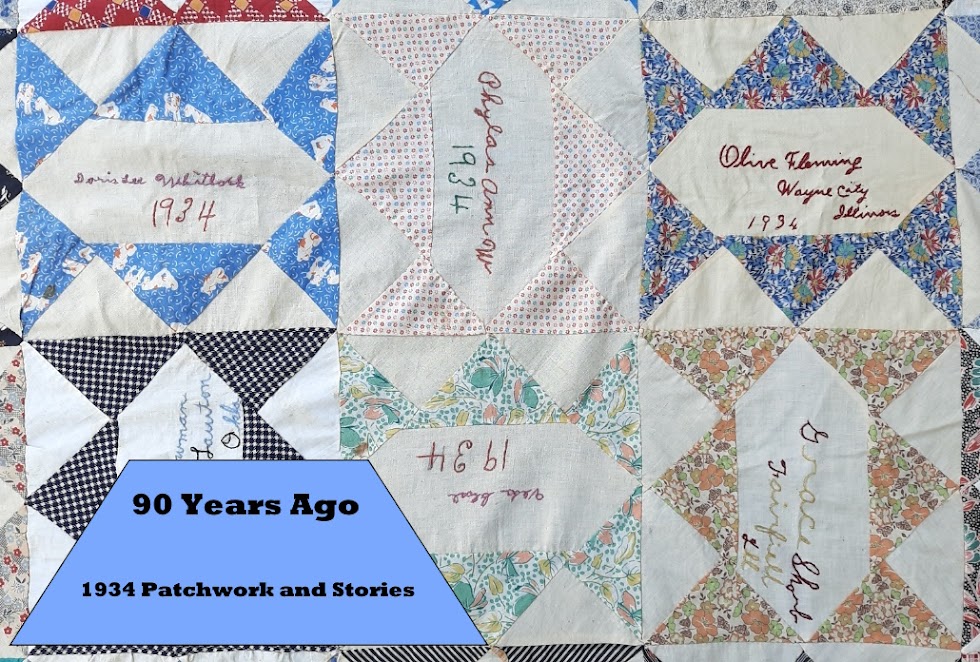Sailing ships blocks were popular in friendship quilts. I have two quilts in my collection with sailboats; the Banner Progressive Club quilt and the newly named Sugar Creek Township quilt.
According to Block Base the earliest pattern for a ship block was in Mrs. Danner's quilt books. I found them easily online. Mrs. Danner's Fourth Quilt book has the Ship Quilt on the cover. There are no instructions, you had to send 50c for the pattern. I considered making the scalloped edge but thought better of it. Maybe next time.
Mrs. Danner's Quilt Books
Unlike Aunt Martha or Nancy Page, Mrs. Danner was a real person. Scioto Imhoff Danner (1891-1974) was a quiltmaker who began her career by selling quilts and demonstrating techniques in department stores. She started selling her patterns in the 1930s and her business model was extremely successful; in 1934 during the depression Danner had 24 women worked for her.
The quilt books were catalogues for the patterns with advice on choosing a colour scheme and sewing tips. The first three books were printed in the 1930s, then books 4 and 5 were added in the 1950s.
As a resource for pattern names, the catalogues are not the most reliable source. Mrs. Danner would see a neighbour's quilt, copy it, then christen it without reference to already established names:
I shall call this Mrs. Anderson's Quilt. It has always been called that because our neighbor, Mrs. Anderson, made it when I was a little girl.
Mrs. Steiger kept after me about the name for this quilt and continually referred to it as "that very pretty new one that ought to have a pretty name," so I called it Alice's Quilt for her.
An Easy Applique Hickory Leaf - I am naming this quilt just that. It is easy and would be improved by having all blocks appliqued instead of half of them plain. And it should have more applique on the border. It has a historical name but that is too involved for my space. I suggest you make it in two different shades of one color or two contrasting colors. Pattern 35 cents.
Some of her historical narrative also seems a little imaginative:
The Mayflower Quilt - The first four quilts in this catalog are each over 100 years old. This is one of the prettiest quilts I ever saw and Mrs. Ericson whose hobby is historical quilts, found a picture just like it listed as a pattern that came over on the Mayflower in 1620.
But I can't go past Myrtle's Diamond Honeycomb. It was made by a correspondent in Australia, and Mrs. Danner was most impressed with the Australia quiltmakers:
My Australian friend Myrtle Smith of Melborne (sp.) made this quilt ... The Australians are marvelous needle women. They take sewing seriously. Needle-workers have clubrooms, publish a monthly bulletin, and have teachers who give lessons on different kinds of embroidery, quilting, etc. certain days - afternoon or morning. There is a schedule that they follow. My friend, Mrs. Smith lends them her lovely home each year for a quilt show and they make money for charity on that, besides the pleasure they have.
You can find out more about Mrs. Danner at the following websites:
http://quilthistorytidbits--oldnewlydiscovered.yolasite.com/scioto-imhoff-danner.php
http://womensworkquilts.blogspot.com/2018/09/entrepreneurs-scioto-imhoff-danner.html











